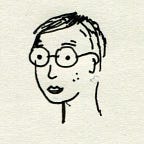Making Art and Technology More Accessible
I am committed to supporting the accessibility and inclusion of disabled people creating and experiencing art. Technology often comes into the picture, as an artistic medium(code, hardware, web, interaction) or as a communication tool(Alt-Text, Sign Language Interpretation, Visual description, and more). For my position on disability and technology, check out Artificial Advancement, published on the New Inquiry in 2018. Recently, between 2020 and 2021, I worked with a team of educators, producers, technologists, and curators to make our work more accessible and inclusive. I was supported by partner organizations in New York, Seoul and Hong Kong as well as the Open Society Foundation Human Rights Initiative. In this blog post, I aim to compile our work for future references.
Community and Accessibility Online
Video documentation
Transcript
Community and Accessibility Online was organized by Data and Society Research Institute in New York on April 15, 2020. I participated as a panelist, along with Chancey Fleet who spoke about the myriad of difficulties blind communities faced from the COVID-19. The panel centered on building more inclusive, accessible communication and modes of connection. The video documentation is accessible online in English audio and American Sign Language.
Creative Coding for Different Learners
Workshops in Korea(Korean)
Workshops in Hong Kong(English)
From September to November 2020, I researched and created accessibility guidelines for disabled people learning to code for the first time. The preliminary research(Korean) is published on Korea Disability Arts and Culture. From January to February 2021, I organized online coding workshops for disabled artists on a weekly basis, in collaboration with Bohyun Jung and Stuckyi Studio as fellow teachers, and Suhyun Choi and Jaemin Shin as teaching assistants and producers. I participated in an interview(Korean) with Bohyun Jung, one of the teachers, for Korea Disability Arts and Culture’s web magazine. We also organized a similar workshop for students in Hong Kong, in collaboration with the students of Ebenezer School and Home for the Visually Impaired and Centre for Heritage, Arts, and Textile. The students of two workshops had different access needs,
A Guide for Co-Creating Access & Inclusion
Taking the lessons from various projects, I published a Guide for Co-Creating Access and Inclusion in the Creative Independent, a publication by Kickstarter. The guide is a result of the last five years of collaborating with different disability communities, the suggestions come directly from them. It’s also a way to bring together important theories and approaches, such as co-creating a community code of conduct and making online programs more accessible by writing Alt-Text captions for images. More than a be-all, end-all guide, it’s more of a primer for people like me to begin making programs and spaces more accessible.
On Unlearning Conceptions around Disability
I was interviewed by Willa Köerner for The Broadcast, published by Pioneer Works. “A big part of “unlearning disability” is to unpack the concept — how it’s a construct that’s determined by the external environment and how it’s a personal lived experience… I usually expand on the notion of disability as an identity, culture, art form, and expressive element. I introduce some of the artists, scholars, and activists who, first and most importantly, take pride in their disabilities, and, second, create work that is reflective of their experience. I’ve referenced many of them in the guide, but to share a few here, they include Sins Invalid, Mia Mingus, Leah Lakshmi Piepzna-Samarasinha, and the Disability Justice collective.”
Plan for 2021 and 2022.
I am focusing on creating exhibitions and performances that are accessible and inclusive. I organized an exhibition Interweaving Poetic Code at Centre for Heritage, Arts and Textile in Hong Kong this spring, and Art Sonje Center in Seoul this fall. Some of the works in the exhibitions are made specifically for tactile experiences. With a team of educators and accessibility consultants, I’m planning to invite disabled artists and audience members to the exhibition. There’s much more work to be done. The work could take inspiration from Speculative Science Fiction. Kim Choyup is a writer based in Korea, who identifies as a Deaf person. Her conversation with Kim Wonyoung, a disabled artist, lawyer, and researcher, which was made into a book, has opened my perspective about accessibility and inclusion in South Korea and East Asia. Moving forward into 2022, I plan to make more content available to disabled people in South Korea as well as my focus regions, Japan, Hong Kong, Kazakhstan, and Kyrgyzstan. Enhancing accessibility is not only a technical challenge. It is also cultural, political, and relational.
